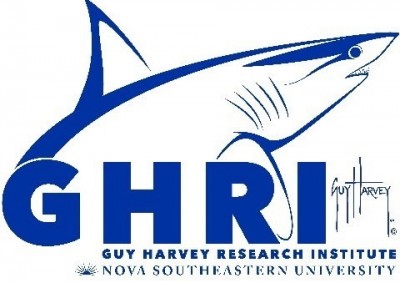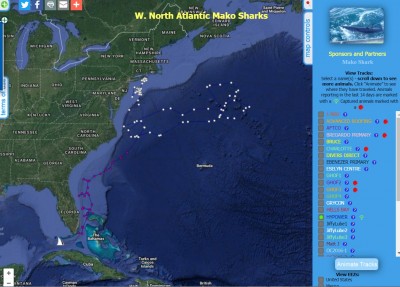NSU Newsroom
SharkBytes
Horizons
This version of NSU News has been archived as of February 28, 2019. To search through archived articles, visit nova.edu/search. To access the new version of NSU News, visit news.nova.edu.
This version of SharkBytes has been archived as of February 28, 2019. To search through archived articles, visit nova.edu/search. To access the new version of SharkBytes, visit sharkbytes.nova.edu.
Mako Shark Takes Winter Break in South Florida
Apparently snowbirds aren’t the only visitors making their way to South Florida this winter.
For the first time ever, a mako shark tagged off the coast of Maryland has migrated along the eastern seaboard down to South Florida. Hypower, a male mako shark tagged 150 days ago, has traveled in excess of 5,000 miles during that time. He passed off the coast of South Florida and last “pinged” near Key West. Follow the travels ONLINE (choose W. North Atlantic Mako Shark project.)
Hypower was tagged by scientists at Nova Southeastern University’s (NSU’s) Guy Harvey Research Institute (GHRI). Makos are tagged annually in the spring off the coast of Ocean City, Md.
 “We’ve seen some of our tagged makos take incredibly long trips way out into the deep Atlantic Ocean, but this is the first one tagged off of Maryland coming to S. Florida waters,” said Mahmood Shivji, Ph.D., a research scientist at NSU’s Halmos College of Natural Sciences and Oceanography. “We’re constantly learning new things from these animals and this information is vital if we’re to work to protect and conserve them for generations to come.”
“We’ve seen some of our tagged makos take incredibly long trips way out into the deep Atlantic Ocean, but this is the first one tagged off of Maryland coming to S. Florida waters,” said Mahmood Shivji, Ph.D., a research scientist at NSU’s Halmos College of Natural Sciences and Oceanography. “We’re constantly learning new things from these animals and this information is vital if we’re to work to protect and conserve them for generations to come.”
Shivji is also the Director of NSU’s GHRI.
 The tags are funded by the Guy Harvey Ocean Foundation (GHOF), a non-for-profit organization that conducts scientific research and hosts educational programs aimed at conserving the marine environment.
The tags are funded by the Guy Harvey Ocean Foundation (GHOF), a non-for-profit organization that conducts scientific research and hosts educational programs aimed at conserving the marine environment.
“It’s great that we have one of our makos visiting us here in South Florida,” said Greg Jacoski, executive director of the GHOF. “We’ve had a few firsts this year with our tagged makos. With Hypower, it is the first time a mako swam a route down to
South Florida. Then earlier this year we had our Hells Bay mako break a record, traveling more than 13,000 miles in 600 days. This is important in
formation for us as we continue with our research because unfortunately about 22 percent of the makos that are tagged are caught or killed by commercial or recreation fishermen.”
 The closest relative to the great white shark, makos are the cheetahs of the shark species. As the fastest species of sharks, makos can swim up to 60 mph.
The closest relative to the great white shark, makos are the cheetahs of the shark species. As the fastest species of sharks, makos can swim up to 60 mph.
- To see Hypower’s journey and the satellite tracks of other tagged makos, visit nova.edu/sharktracking